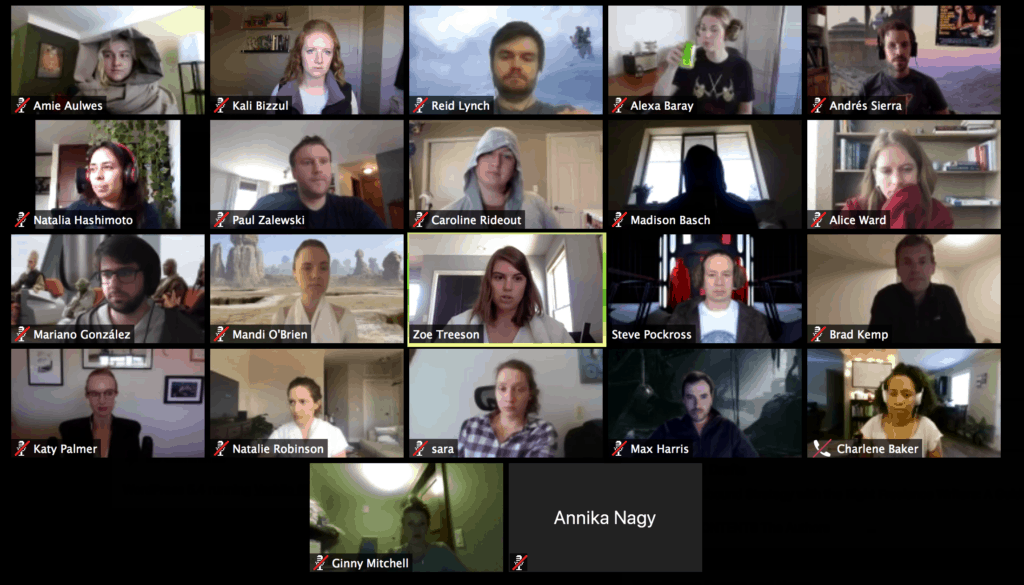Why This Is a Once-in-a-Lifetime Opportunity for Content Marketing
A note from Verblio CEO Steve Pockross: The following post was drafted by a member of our 3,000-strong Verblio writer community. My goal was to create a thought leadership piece by leveraging the best of what a great writer offers—structured thought, clear and fast writing, understanding of my tone—while still making the piece my own. My goal was to get a great draft that took me 70% of the way there, so that I could take it from there through the home stretch. Without that 70%, I would barely write at all. With it, I can create 10x the content.
SEO rocks as a marketing channel. It has for a long time, and I expect it to keep rocking the same way that classic rock still dominates the airwaves. When done well, you find your next customers at the lowest acquisition price, it builds your brand, and everyone feels good in the process. Even the cool kids who are into that EDM garbage ABM digital ads arbitrage play. You answer, and then your audience asks. It works like karma: you share something valuable with the world, and you get repaid in both traffic and good juju for years to come.
But you all know this story. And it’s not a new one. But like all good stories, they will be more meaningful based on context. And this story just got supersized.
So, if it’s such a great story, why doesn’t everybody play along all the time? Well, SEO may rock, but it doesn’t rock by itself. It requires a serious commitment to doing the right thing over a long period of time. For many businesses, content (the fuel for SEO) takes a backseat to more convenient, instant-gratification methods. It’s just easier to enjoy the short-term payoff for paid ads over believing in the long-term effects of your next pillar piece on the benefits of infusing your HR process with agile development methods. Why bother running and eating broccoli every day when you can just chug a few Red Bulls for a quick rush?

And then this happened….
When the world changed a few months ago, the state of marketing changed too. The good news? You don’t have to worry about the decision between long-term investment and short-term payoff any longer—it’s been made for you. Content marketing always rocked as one of your favorite bands with songs like “massively effective channel,” “good content juju,” and “brand me up.” But now there are just fewer bands to listen to on your marketing channel radio—no conferences with exhibit halls, no salespeople getting on planes…
And that’s how content was king, and then got promoted.
What are the factors contributing to this golden era for content, and how can marketers best take advantage of it? We’ve put together some facts, some figures, and some of our own insights from our boots-on-the-ground view to help you jumpstart your own long-term results. Who knows, you may even decide you like broccoli.

Why Now? Some Content Numbers/Trends
Content is actually expanding as a channel during the COVID-19 crisis. In the absence of sports and live programs to watch, people are consuming more online content than ever before.
According to recent study by GlobalWebIndex, we’re seeing the following increases across the U.S. population:
- 30% consuming more online press
- 39% watching more online videos
And it isn’t just a temporary bump: 57 percent of respondents said they plan to continue consuming more online press, even when the crisis is over.
Another relevant stat for marketers? In a change-up from the widespread move toward mobile that’s been happening in recent years, our computers have been getting a larger piece of the pie since the outbreak. Desktop has seen a 76 percent rise in search, versus a 61 percent jump for mobile. It’s been a while since we saw any chart that didn’t indicate pure mobile dominance from here to telepathic communication.
Even as consumption is growing, however, the world of media is shrinking. Sadly, layoffs are happening across the publishing world—including at major names like Conde Nast and The Atlantic, in addition to digital groups and local outlets—as they face budget cuts and reduced revenue.
Where rising consumption meets shrinking production lies an opportunity for marketers: audiences are looking to fill the content gap left by traditional publishers, and brands have an opportunity to fill some of that gap.
What Verblio Is Seeing with Our Own Clients
When the COVID-19 outbreak first occurred, many of our small to mid-sized clients paused their accounts—about 15% of them. We didn’t take it personally—after all, nobody knew what the world was going to look like the next month or even the next day. Interestingly, the biggest clients kept their content creation consistent even at the beginning.
Starting May 1st, 2020 (1.5 months into the escalation of the crisis), we saw a new trend arise. We saw a rush of new larger clients, joining our platform and investing big in content. We believe this to be a trend of the larger pool of marketers taking advantage of the unprecedented opportunity the crisis presented to reach their audiences at home.
This growth jibes with what other major players are seeing across the industry. In a recent study by NewsCred, 72 percent of marketing leaders expected significant budget increases for web content as a result of the pandemic, with 57 percent expecting the same for blog content.
Budgets going up because of the pandemic? It’s not a common story right now, but it makes sense. At a time when in-person events and conferences are a no-go and hard-sell paid ads can appear tone-deaf, content continues to provide a way to reach your audience where they are. Perhaps even more importantly for our current environment, it acknowledges the reality that everyone is in a different place right now. It puts you in front of your audience, while still allowing them to come to you when they’re ready to buy.
Effective Content Marketing: What’s Still True & What’s Truer than Ever
Now that content is essentially the only game in town, have effective strategies changed? Yes and no. The same basic principles apply, but certain particulars have become paramount.
It’s All about Tone
Your voice has always been important, but striking the right tone now is non-negotiable. It’s imperative that you bring sensitivity to your content and find a way to truly connect with people.
Be real, be genuine, and speak to your audience. Recognize where they are at this moment. No matter how B2B your brand may be, right now you’re not speaking to a corporate hierarchy—you’re speaking to someone who’s probably reading your blog post in between monitoring their kid’s schoolwork and a stressful trip to the grocery store.
As I first heard in my talk with Kelly Campbell, the line between our professional and personal lives has been blurred, and, if there is a single silver lining in this, it is the renewed sense of common humanity we share. Half of our Zoom meetings have children, dogs, or sirens in them, and we all accept that. Your content should, too.

Long-Form for the Long Game
Content marketing has always been a longer game than paid advertising, but that is a feature, not a bug. The average customer today consumes 11.4 pieces of content before making a purchasing decision. That’s 11.4 opportunities for you to get in front of them with content that shows you understand who they are and what they’re looking for.
Focus on evergreen and long-form content to take advantage of those opportunities and to build your inbound marketing funnel for the future. Just how long should that content be? This will always be a matter of hot debate until Google tells us the dang right answer.
For now, we balance doing right by your reader and the data. For your reader, each article should be as long as it needs to be to answer the core premise of the article. As for the data, according to a recent HubSpot report, articles that are more than 3,000 words get 3x more traffic than shorter articles. So, say what you need, but don’t focus just on the quick hits, create content that’s comprehensive—you’ll serve the machine by creating lengthier content, but you’ll also serve humans by answering all their questions.
Stay in Your Lane
“Evergreen,” you might be asking… “With all that’s going on in the world, don’t my readers want timely articles?”
In short, no. Pew Research recently reported that 71 percent of Americans say they need to take breaks from COVID-19 news. Your content can provide that break, while allowing your business to educate and entertain with the topics you know best—which is what content marketing is all about. At Verblio, where we get to see what 2,000 marketers believe is the best content strategy every month, we found that only 15 percent of the content we were writing for those 2,000 customers in April 2020 was topical to the crisis.
Sticking to the topics that make sense for your brand also helps to build credibility and trustworthiness. As people make buying decisions in the current environment, a brand’s trustworthiness has become even more crucial. Protect and build that trust through content that is sincere and truly adds value to their day, and you’ll reap the rewards later.
The world is changing quickly. As Natalie Henley described it in our expert interview, everyone’s been dealt a new hand—and nobody knows what the next one will be. We don’t get to choose the game, but we get to decide if we want to play in the game already happening. What we do know, though, is that content was king. And now it’s been promoted. We tripled our own content post-crisis after our other top three marketing channels for the year went away in a puff. We think it’s probably a good time for many marketers to up their game too.
But don’t just take our word for it. Here’s what 10 leading experts said about content marketing in today’s environment as part of our new podcast.



